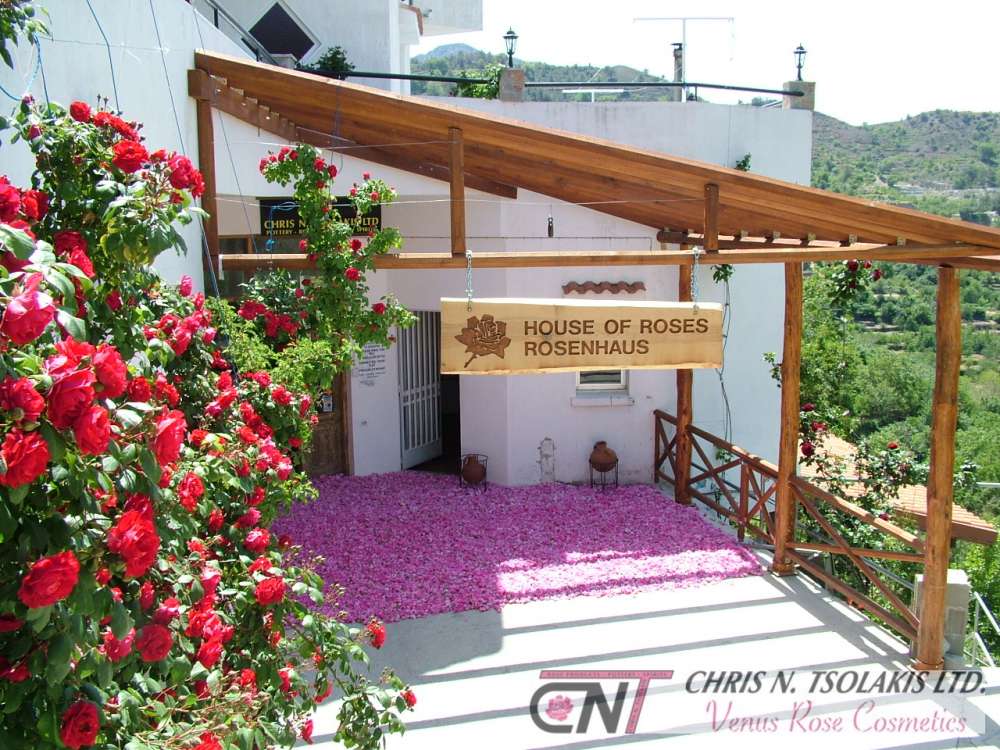Located in the Troodos mountain range, in the Pitsilia area of the Lemesos (Limassol) district, Agros sits at an altitude of 1.100 metres. The village can be reached from Lemesos by following the route B8 (from the roundabout of Polemidia), then the E801, and the F948 thereafter. Built amphitheatrically among the mountains, Agros is nestled in stunning environs of panoramic forest views, making it ideal for agrotourism. It has maintained its traditional character and customs and grows a variety of fruits and vegetables.

The village is famous for its cultivation of roses, along with its production of cured meats (sausages, ‘Lountza’ and ‘Hiromeri’), homemade marmalades and sweets. Visitors can see these traditional practises at the workshops where rose oil distillation, sweet making and meat production take place.


Agros is in the heart of the Pitsilia region situated in a beautiful valley with a dry climate and cool springs. The village was given its name by forty monks who came to Cyprus from Asia Minor during the iconoclastic period and named it after the place they had left behind, ‘Megas Agros’.

A 9th century monastery built by monks from Constantinople once stood where the 19th century Byzantine style church of Panagia Eleousa stands today. Agros also has a museum of icons. The village is also known for its traditional products such as aromatic rosewater, ‘hiromeri’ (smoked ham), ‘loukanika’ (spicy smoked sausages) and ‘lountza’ (smoked fillet of pork).
Frangoulides Museum
One of the most important museums of the island is the “Museum Fragoulidi” and it is built near the church of Panagia in the village Agros. The museum was founded in 2004 to honor Solomos Fragoulidis who was one of the greater representatives of the first generation of Cypriot artists. He is also considered a pioneer painter and hagiographer. The love between the painter and the habitants of the village was mutual and it grew during the stay of Fragoulidis in Agros from 1932 to 1934.
The Olive-mill of the Church of Agios Ioannis Prodromos in Agros:
Traditional Mill
In 1930, the olive-mill of the parish of Pera Geitonia was transferred from the underground floor of the Virgins’ School of Agros to the traditional building that is housed today, next to the church of Agios Ioannis Prodromos. This manually-operated system, with which olive producers would get their olive-oil, is in a good condition. There is a presser, a mill, knits with holes in the middles called “zempilia” and other tools and objects which all together form a small Popular Art Museum. The building is made of stone and wood and its roof is made of tiles. The entire project was completed with the guidance of the Department of Antiquities.
Traditional Presser
A similar olive-mill for the parishioners of Panagia of Agros existed until 1949 next to the fountain of “Kaouras”. It was dismantled because of the creation of the electric generator of Vrasidas Eirinarchos and was transferred at a place between the Church of Panagia and the Primary School, where the mill stones still exist.
Byzantine Chapel – Museum of the Monastery of Megas Agros
The destruction of the historic Monastery of Megas Agros, which according to tradition had been built by monks who had come from Kyziko of Asia Minor during the period of iconoclasm, occurred in 1894. The present church of Panagia Eleousa of Agros was built in its place.
Based on the descriptions of the Monastery, a chapel- Museum was rebuilt, in which the iconostasis, the Despotic Icons of the 12th century, old books and any other objects that had been preserved from the destroyed Monastery, were placed in it. In the churchyard, the Department of Antiquities discovered not only architectural remains, but also a few samples from the Monastery’s hagiographies because its walls had been completely covered with them, as well as many hamose tiles which were used to cover the wooden roofs of the Troodos churches.






